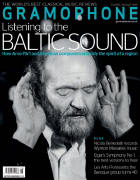Texte paru dans: / Appeared in: |
|
|
Outil de traduction (Très approximatif) |
|
|
Reviewer:
William Yeoman At first glance, it is hard to imagine anything cheerful coming from a theorbo. It even looks like an instrument of torture. Some players, having spent too much of their lives tuning its recalcitrant strings, may agree that this is indeed the case. As Elizabeth Kenny writes in her booklet note, Inigo Jones was even prevented from bringing one into the country because customs officials thought it ‘a Popish engine to destroy ye king’. Yet this awkward giraffe of the lute family is capable of the most exquisite utterances. Lugubriousness rather than levity may be the home key. But the theorbo’s dark soul is, to our modern ears, one of its most attractive qualities. That, and its utter strangeness. Especially when contemporary composers deign to write for it. Or maybe not so especially. Because even the music of Baroque composer/ players Piccinini, Kapsberger and de Visée sounds as novel as that of moderns MacMillan, Oliver and Muhly. With its re-entrant tuning and deep diapasons, the theorbo, or chitarrone, may have originally been designed to accompany singers, especially in opera. But for those composers with imagination, it presented an entirely different proposition. Kenny lacks neither extensive playing experience in chamber, orchestral or operatic contexts nor a brilliant musical imagination. She brings both to bear on these performances of ‘old and new music’. Whether it’s a richly layered toccata by Piccinini or Kapsberger, a mournful tombeau by de Visée or a bittersweet berceuse by Muhly, she beautifully combines an expansive orchestral conception with an almost painful improvisatory intimacy. It’s just lovely.
|
|




